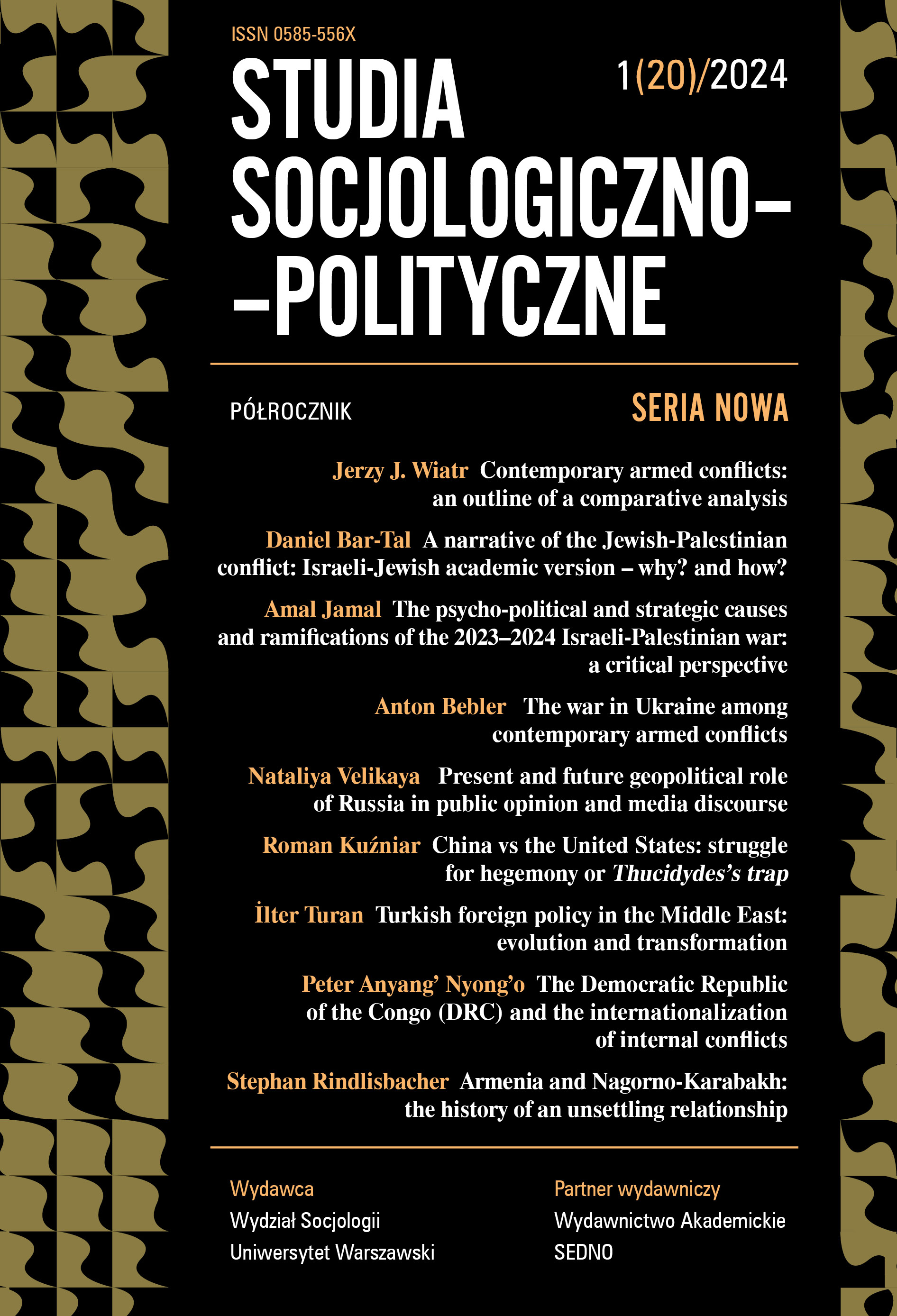CONTEMPORARY ARMED CONFLICTS: AN OUTLINE OF A COMPARATIVE ANALYSIS
CONTEMPORARY ARMED CONFLICTS: AN OUTLINE OF A COMPARATIVE ANALYSIS
Author(s): Jerzy J. WiatrSubject(s): Politics / Political Sciences, Politics, Political Sciences, International relations/trade, Security and defense, Military policy, Geopolitics, Peace and Conflict Studies
Published by: Wydział Socjologii Uniwersytetu Warszawskiego
Keywords: armed conflicts; colonialism; ethnicity; weapons of mass destruction; war
Summary/Abstract: After the second world war armed conflicts between states underwent changes causedby the effects of the invention of weapons of mass destruction and of the division of Europe between two blocs of states dominated by the two superpowers: USA and USSR. Most of the armed conflicts during the cold war period were caused either by the crisis of colonialism or by the ethnic rivalries, mostly in the new states. The Korean war was the only armed conflict between states with the direct involvement of two great powers (USA and China) and caused by the ideological division of the world. After the end of the cold war the dissolution of the Soviet Union and of Yugoslavia caused several ethnic wars, with the NATO intervention in the former Yugoslavia. A new wave of armed conflicts was caused by the Islamic radicalism in Iran and in some Arab states and by the growing strength of China as an emerging superpower. The Russian aggression against Ukraine created a new international situation with the indirect involvement of the democratic states. Future architecture of international relations depends on the outcome of the Russian-Ukrainian war.
Journal: Studia Socjologiczno-Polityczne. Seria Nowa
- Issue Year: 20/2024
- Issue No: 1
- Page Range: 9-22
- Page Count: 14
- Language: English

